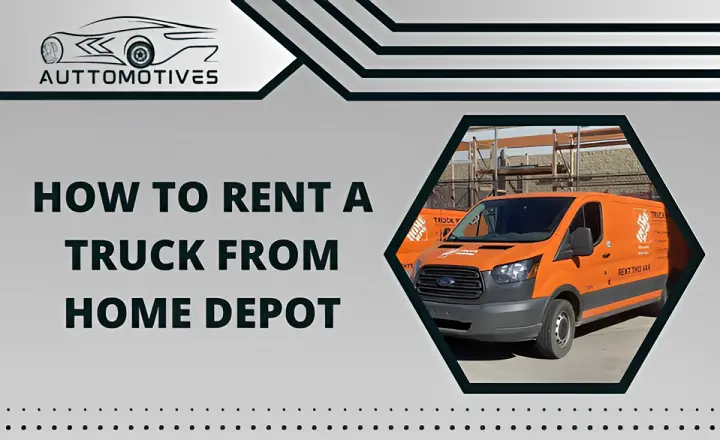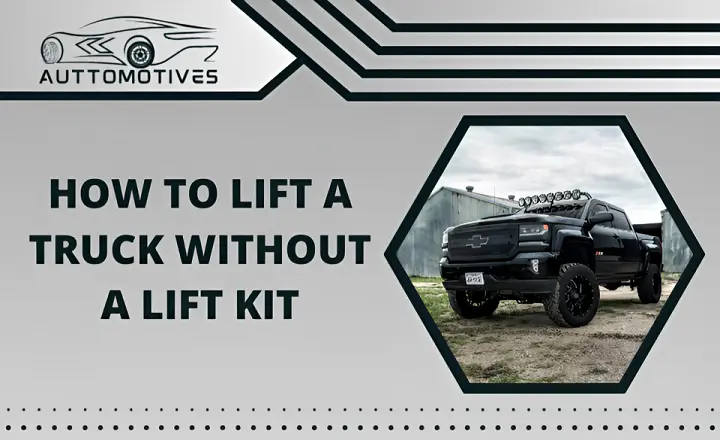How to Lower a Truck with Leaf Springs | Best Guide
Are you tired of driving around in a truck that sits higher than you’d like? Maybe you’re looking for a more aggressive stance or improved handling. Whatever your reason may be, lowering your truck with leaf springs is an effective way to achieve the desired look and performance. But where do you start? In this article, we’ll walk you through the steps on how to lower a truck with leaf springs.
Leaf springs are the most common type of suspension system found in trucks, and they offer several advantages over other types. They are durable, reliable, and can handle heavy loads without sagging. They also provide ample opportunity for customization when it comes to lowering your vehicle’s ride height.
How to Lower a Truck with Leaf Springs

Lowering a truck is one of the most popular upgrades for driving enthusiasts. It not only enhances the appearance but also improves the performance and handling of a vehicle. Lowering a truck can be an expensive process, especially if you opt for expensive suspension systems. But did you know that you can lower your truck with leaf springs? Yes, it’s true! Leaf springs are an affordable way to give your truck the desired lowered look without breaking the bank.
If you’re looking to lower your truck with leaf springs, one of the first things you’ll need to do is raise the rear axle off the ground. This will give you access to the leaf spring and allow you to make the necessary adjustments. Before getting started, it’s important to ensure that your truck is on a level surface and that the parking brake is engaged.
Once you’ve taken these precautions, use a set of socket wrenches to loosen and remove the screws holding your leaf springs in place. Depending on your specific make and model of truck, this process may require anywhere from two to six bolts per side. Be sure to keep track of each bolt as you remove them, so that they can be easily reinstalled later.
After removing all the bolts holding your leaf springs in place, carefully lower them down from their brackets using a floor jack or other lifting device. To begin, make sure that your truck is in the park and on level ground before starting any work. Locate your jack and place it under the rear axle on one side of the vehicle.
Use an appropriate socket wrench to remove the bolts from the U-bolts connecting each leaf spring to its respective axle. Once all of these bolts are removed, slowly lower the jack until both rear wheels touch the ground. Repeat this process on the other side of your vehicle using another set of U-bolts and removing all old hardware as necessary.
How to Adjust a Chevy C10 Pickup

Chevy C10 pickups are some of the most popular and classic trucks on the road today. Even the best Chevy C10 pickup requires regular maintenance to keep it running smoothly. One essential aspect of this maintenance is ensuring that all components are properly adjusted. Here’s how to adjust a Chevy C10 pickup:
Front rear
To install the parking brake, put it inside the car. Using a crane, elevate the front of the truck and fix crane brackets to both sides of the automobile, positioned just beneath the truck frame and below the front wheels. Place the vehicle on the crane brackets and then lower the crane beneath it. For removing the tires and ears, utilize iron to take off the front tires.
Lift the suspension by placing your hand beneath the crane and raising it slightly. Then, extract the needle from the lower half of the ball with pliers. Using a 10 mm wrench, release the lower ball joint from the lower control arm and extract the shaft from the device. In case the bar remains stuck, strike it with a hammer until it breaks.
Use a rod to remove the spiral spring from the machine casing once you have reduced the lift. Then, place the new reduced spiral spring on the spring seat and replace it with the old one.
Replace the old helical spring with a new one by lowering the control lever once more. In addition, swap out the shaft with a new needle. Take into account the elderly. Once the lift brackets have been removed, attach the front wheels and bring down the truck using the lift.
Back rear
Lift the back of the vehicle and position the crane brackets beneath each side, close to the rear wheels, and directly under the frame. Position the lift underneath the C10’s rear axle to slightly curve it and fully elongate the back springs.
- Loosen the massive U-bolts of the vehicle using the wrench. While removing the nut from the highest point of the safeguard, unscrew the base U screw. Do the same thing on the opposite side of the car.
- Raise the shaft with a crane to detach it from the leaf spring, then proceed to move the lowered leaf spring block.
Lower the vehicle to the ground and test the new low suspension after replacing the U bolts, installing new shock absorbers, and reducing the shaft length until the springs are fully expanded once more.
Can you remove the leaf from the leaf springs?
If you’re looking to remove the leaf from your leaf springs, it’s important to know how to disconnect the screws that hold them in place. These screws are typically fastened to a shaft and can be difficult to remove without the right tools. Fortunately, with a 1/2-inch handle and socket, you can easily disconnect these screws and begin drawing your leaf springs.
To start, locate the screws that are holding your leaf spring in place. You may need to use a flashlight or other lighting source to see them clearly. Once you’ve located the screws, use your 1/2-inch handle and socket to begin unscrewing them from the shaft. Be sure not to apply too much pressure as this can damage the screw or surrounding components. Once you’ve successfully disconnected all of the screws holding your leaf spring in place, carefully remove it from its position on the shaft.
Is lowering the handling of the truck improved?
Trucks are designed to carry heavy loads and transport goods, making them a crucial component of the modern economy. The truck suspension plays a vital role in ensuring that they can handle such tasks effectively. The suspension system of a truck is responsible for managing the vehicle’s weight, controlling its movement, and providing stability while driving on uneven terrain.
The essential function of truck suspension is its ability to dispose of suspension travel. Suspension travel refers to the distance between the wheel and the body when subjected to compression or expansion. By disposing of this travel, trucks can maintain stability while carrying loads over bumpy roads without compromising performance or safety.
Reducing maximum load capacity may result in a trade-off between handling and performance. Despite this potential issue, lowering the handling of a truck could lead to improved performance if done correctly.
How much does the truck’s reversing equipment lower?
Over-rolling equipment is essential for truck drivers who frequently reverse their vehicles. This mechanism prevents damage to the leaf spring package by gradually releasing the tension on the springs as a driver backs up. If you’re looking to lift your truck without a lift kit, understanding alternative methods becomes crucial. Over-rolling equipment can also result in a drop in the rear suspension of trucks, which can affect their overall performance. It’s important to note that while over-rolling equipment can result in a drop in the rear suspension, lifting a truck without a lift kit involves different techniques altogether.
The typical drop you can expect from over-rolling equipment is in the 5 to 8 range, depending on the thickness of the leaf spring package. And while this may not seem like much, it can have an impact on your truck’s handling and stability when reversing. You might experience more sway or instability when backing up, especially when carrying a heavy load. If you’re concerned about how much your truck’s reversing equipment lowers its rear suspension, it’s important to get your vehicle checked out by a professional mechanic.
Conclusion
Lowering a truck with leaf springs is a great way to enhance its appearance and improve performance. Whether you choose to do it yourself or hire a professional, it’s essential to follow the proper steps and guidelines for a safe and successful outcome. From selecting the right leaf springs to making necessary adjustments and modifications, taking your time and being patient is key. By incorporating these tips and techniques into your project, you can achieve a lower ride height that will turn heads on the road. So, what are you waiting for? Get started today!
Frequently Asked Questions
How to lower the front of the truck?
There are a few ways to lower the front of a truck. The easiest way is to use a lowering kit. These kits come with all the hardware you need and usually take about an hour to install. Another option is to use a hydraulic lift. These lifts can be more expensive, but they are also much faster and easier to use.
How do we remove the sheets from the leaf packs?
The sheets can be removed from the leaf packs by hand, but it is easier to use a machine. The machine should have an adjustable blade so that the sheet can be cut at an angle.







